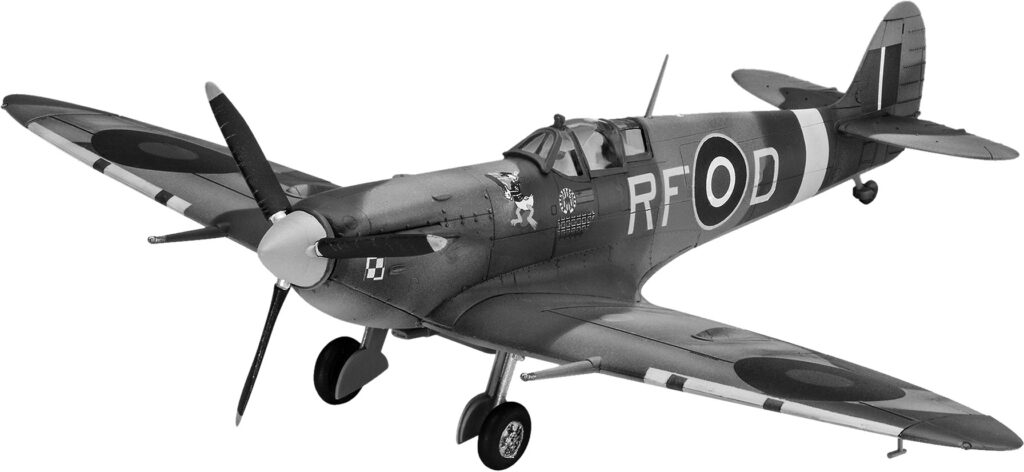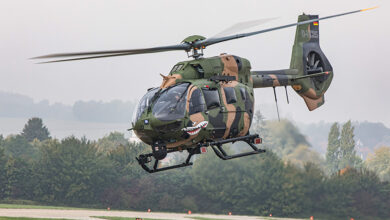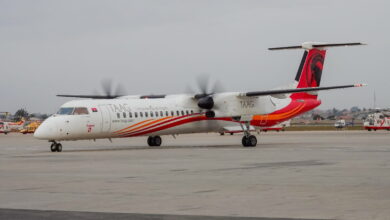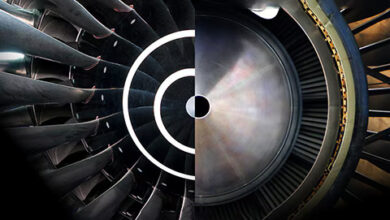Spitfires
By SHYAM BHATIA
London, August 7. A single Spitfire flying through blue skies over Farnborough on the final day of the airshow was an iconic reminder of a bygone era when Allied forces battled the German empire of Adolf Hitler.
Rolls Royce built the original Merlin and Griffin engines of the Spitfires, graciously providing this solo model for appreciative crowds cheering the plane at Farnborough. One of an estimated 70 still deemed to be airworthy, they represent a fraction of those built during the Second World War. As collector’s items, the value of any surviving Spitfire is currently estimated at £4 million.
During the war an overwhelming majority were piloted by young white English males educated at private boarding schools. Names like Charles, Douglas and George were popular among the Royal Air Force (RAF)pilots who flew the aircraft, using words like ‘spiffing’ (excellent), ‘giggle juice’ (whisky) and ‘kybosh’ (putting an end to something) in their daily verbal interactions.

Their German counterparts who piloted the Messerschmitt fighters, such as the ME 109 and ME 110with whom the Spitfires were engaged in perpetual dog fights, had far less appealing names like Gunther, Adolph, Volkhard and Berndt. By all accounts, whenever cornered in the skies, they routinely used words and expressions like ‘achtung’ (attention), ‘sieg heil’ (hail victory) and ‘gott in himmel’ (God in Heaven)
When it came to slang expressions before and during combat, the English excelled at ridiculing the German ‘Huns’ and ‘Krauts’, or the derogatory “Boche’ as they were also known. Watching out for the ‘Hun in the sun’ was a favoured expression at RAF messes. So was the joke, ‘What do you do if cornered by a Boche and a snake ?” Answer: “Kill the Boche first, the snake is less treacherous.”
If English comic magazines of that era are to be believed, survivors of Spitfires spontaneously broke into ‘God Save the King’ British National Anthem when they were safely back at ground level. Their German counterparts apparently sang ‘Deutscheland, Deutschlande Uber Alles’ (Germany, Germany above all).
Not much is known about how German pilots rated ME 109s and ME110s, but RAF veterans always had superlative descriptions about their Spitfires.
“You can’t fly a Spitfire and forget about it, it stays with you forever”, one RAF pilot recalled in a recent World War 2 television documentary. “It’s like a dancing fairy, I can’t really explain it.” Another pilot commented, “You only had to blow at the central stick and it did all you wanted. It’s a brilliant machine, a weapon of war and you had to learn how to use it.”
Credit for the creation of the Spitfire is given to a brilliant aircraft designer, Reginald Joseph Mitchell, who worked at the Southampton factory of Supermarine, a subsidiary of Vickers Armstrong. Heading a massive design team, his ambition was to create an aeroplane that “flew like a bird.” Before his untimely death in 1937, his team had created a fighter aircraft that could climb to 30,000 feet and fly at speeds of upto 400mph.
Ironically, the Spitfire’s unique elliptical wing design that created its wing lift and manoueverability may have been based on a wing design smuggled out of Germany by a Canadian who worked at pre-war German aircraft factories.
The end result was the fastest and deadliest fighter aircraft of its time. During the epic Battle of Britain between July and October 1940, the Spitfires were outnumbered 4-1 by German aircraft, yet they still managed to hold their own and secure air supremacy in innumerable David vs Goliath encounters that prevented the Germans from obtaining a UK foothold. The last Spitfires deployed for active duty in the UK were used for weather forecasting and finally retired in 1957
“The Spitfire did all kinds of things that Mitchell did not anticipate”, says Second World War historian Dilip Sarkar. Kolkata-born Sarkar, who served as a UK policeman before retiring and writing a series of best selling books about war, adds, “It captured people’s imagination, represented British national pride. Today it personifies Britain’s role in history, capturing that defiant spirit. The pivotal moment of the Battle of Britain belongs to the Spitfire. Without the Spitfire, we couldn’t have won the Battle of Britain.”
Voluntary cash contributions from within the UK and the rest of the empire created a special fund of £14 million to make ever more Spitfires. The cost of manufacturing a single Spitfire was £9,000. By the time the war ended 22,500 aircraft had been built in 24 successive designs. Pilots gave their Spitfires individual names, including Indian names such as ‘City of Bombay’ and ‘Atchashikar’, as well as ‘Annie, Olga, Shuddering Shirley’ and ‘Tikkie’.
The most famous Spitfire pilot of all time was Group Captain Sir Douglas Bader, who lost both his legs before the war started but still managed to rejoin the RAF where he flew Spitfires with the help of prosthetic legs. Bader’s war time achievements before he was captured are recorded in the book and film, ‘Reach for the Sky’.





